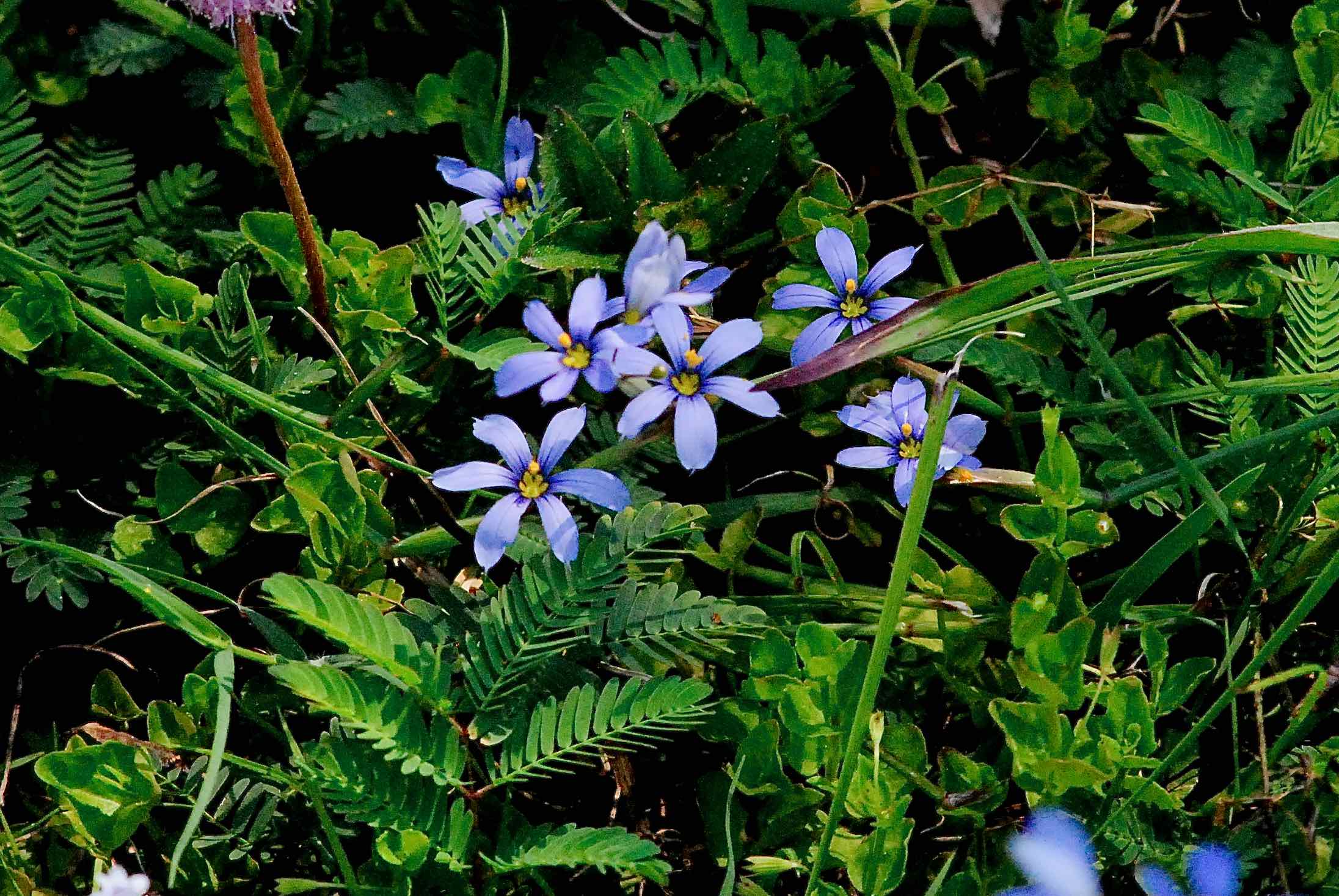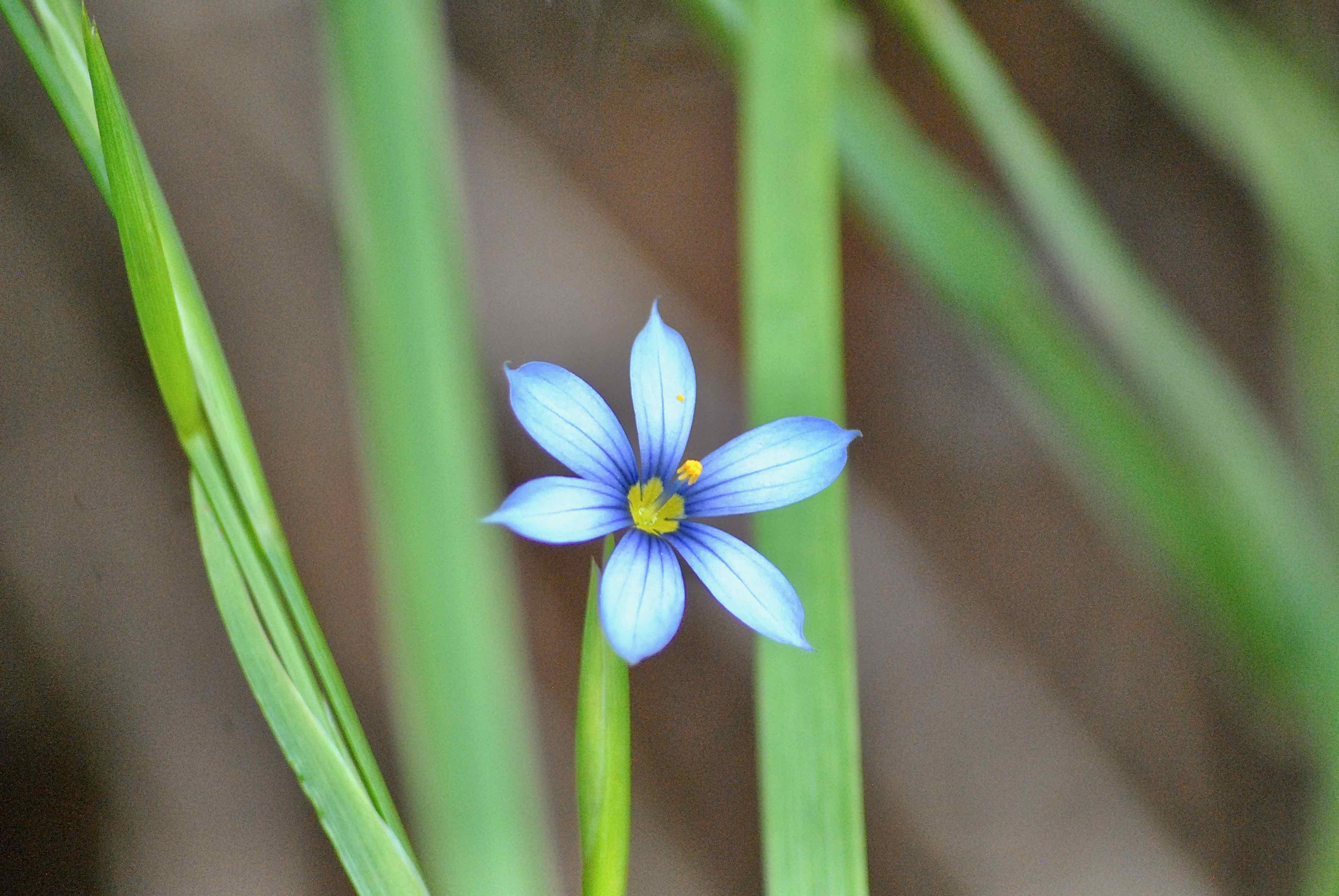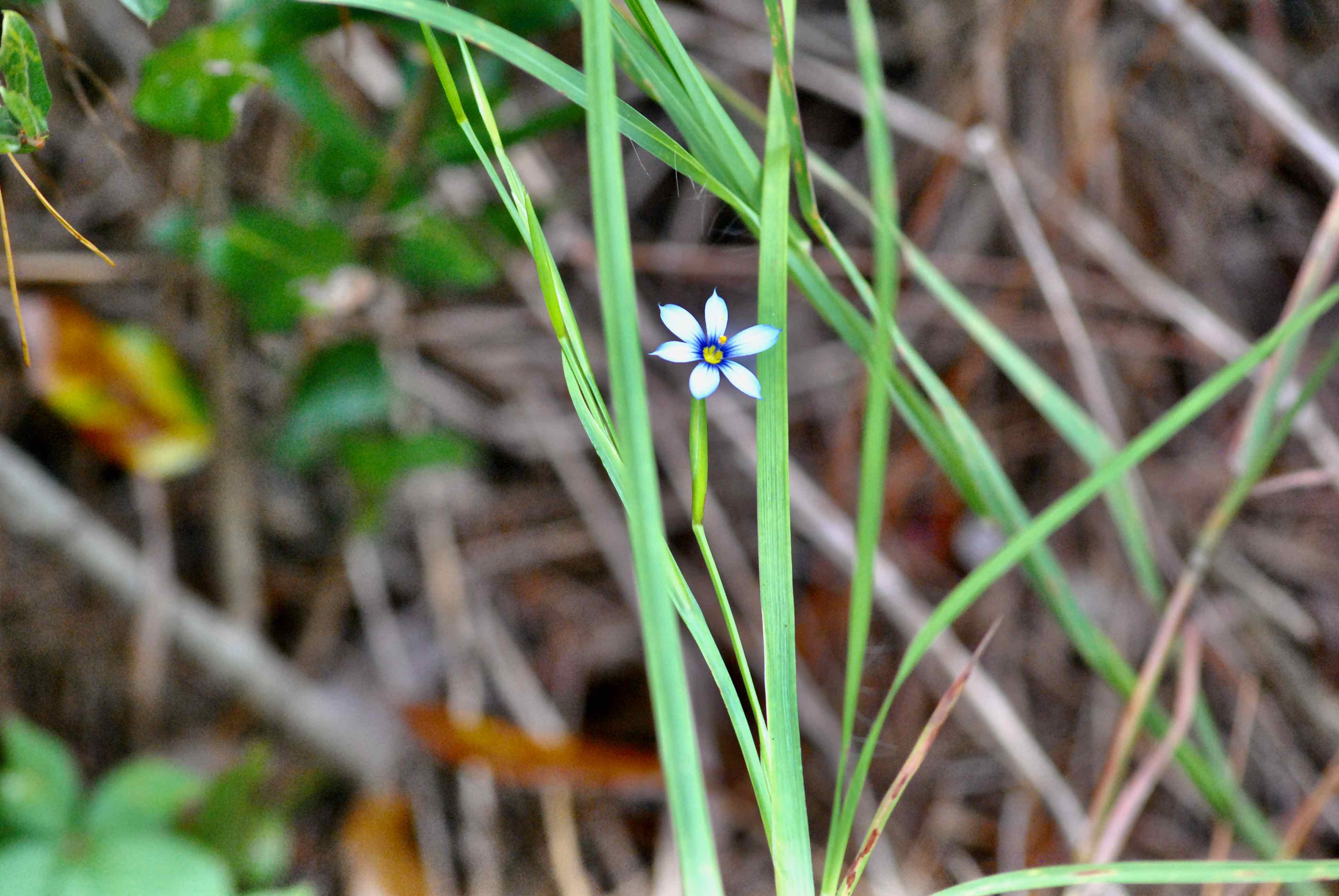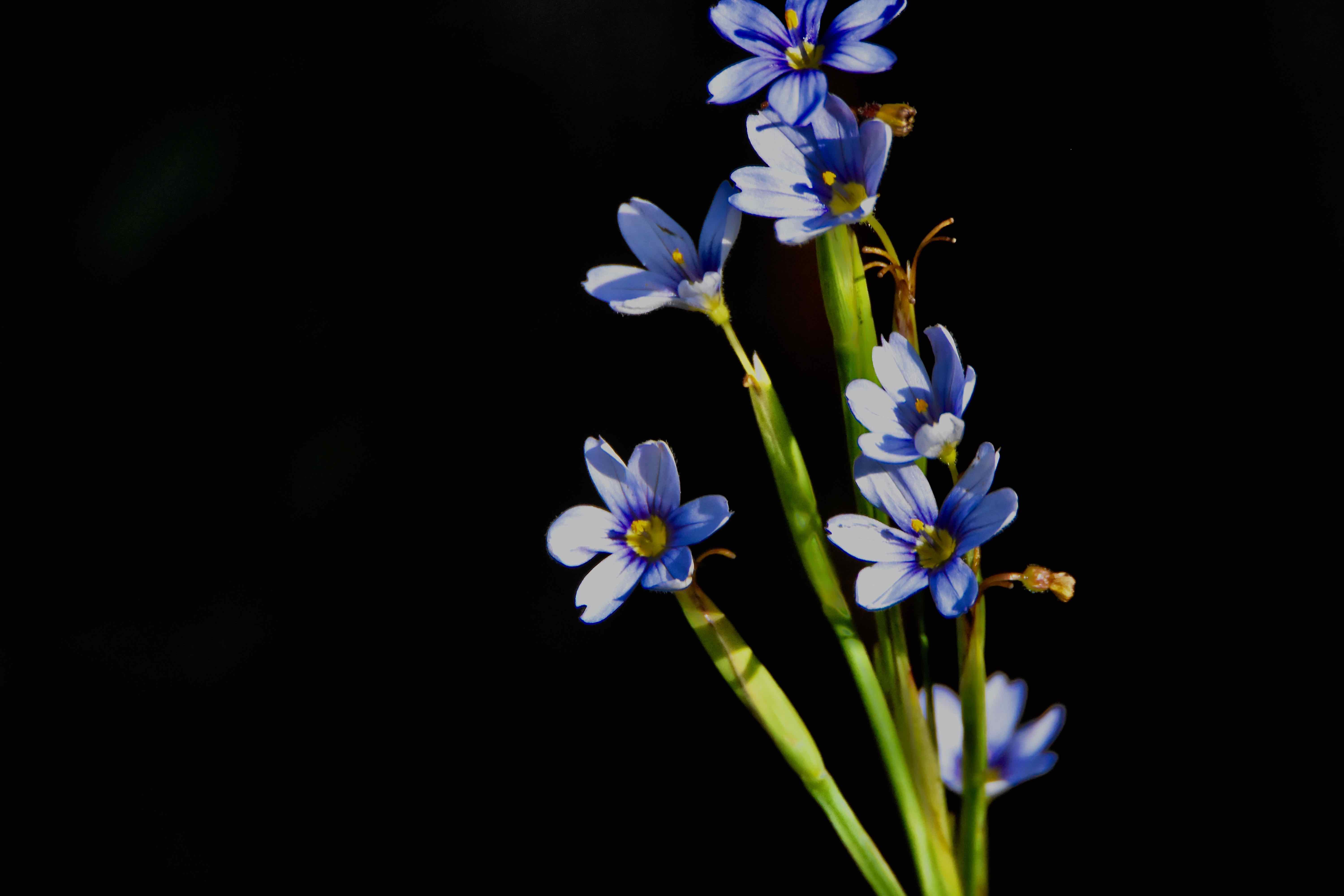
Narrowleaf blue-eyed grass, photographed at Jupiter Ridge Natural Area, Jupiter, Palm Beach County, in September 2018.
Narrowleaf blue-eyed grass rates among the most beautiful of wildflowers but its name has to rate among the least accurate. First, it's an iris, not a grass. Not even a close relative, really. Second, the "eye" of the flower is yellow rather than blue. But one thing about the name is spot on: the leaves are narrow. So there is that.
Narrowleaf blue-eyed grass is fairly common in Florida and a good chunk of the country. It is a Florida native, found in most parts of the state from the Panhandle to the Keys. Beyond the borders of the Sunshine State, it will grow as far north as Ontario and Quebec and other parts of eastern Canada southward to Mexico and the Caribbean, including Cuba. In the United States, it's found from the Atlantic Coast westward into the Mississippi Valley. We seen references that say it is also native to western Ireland. It does grow as a naturalized plant (not a native but still growing in the wild) in England, Spain, France, Italy, the Czech Republic and Macedonia. It might be considered an invasive pest in places.
It's part of the Sisyrinchium genus of about 200 plants generally referred to as blue-eyed grasses even though some lack so much as a drop of blue pigment. Some are white, or even yellow. All are natives to the Western Hemisphere. Narrowleaf blue-eyed grass' full scientific name: Sisyrinchium angustifolium. Our guy does produce blue flowers, but the color can range from deep blue, almost purple, to a pale blue to nearly white. The flowers are small, about a half-inch across, with a yellow center and six pointed petals. In most of its range, narrowleaf blue-eyed grass blooms in spring and summer. In South Florida, it will bloom year-round.
The plant itself grows between six and 18 inches tall, the flowers atop the stem. The leaves are grass-like — hence the name — and grow from the base. Plants are taller than they are wide, but narrowleaf blue-eyed grass can form dense clumps, as it sends out shoots that grow from rhizomes, or underground stems. It likes full or part sun and requires seasonally wet or moist soils. Habitats include wet pinelands and prairies.
As we said before, it can form dense clumps. So dense, in fact, that some recommend it as a ground cover. Oddly enough, narrow-leaf blue-eyed grass is quite popular among European gardeners. In fact, the best-known cultivated variant, C. a. Lucerne, was developed in Switzerland. The flowers are bigger than wild varieties, the plant tolerates cold better and generally is better behaved.
Native Americans used the plant to make a variety of remedies: the Cherokee made a tea from the roots to treat diarrhea in children. They also cooked the greens to keep regular. The Mahuna of California similarly made a tea from the roots to treat stomach worms. The Iroquis would take it before before meals to keep from getting constipated.
Other names and spellings: Bermuda blue-eyed grass, blue-eyed grass, pointed blue eyed grass and narrow-leaf blue-eyed grass. Narrowleaf blue-eyed grass is a member of the iris family, or Iridaceae.
Click on photo for larger image
U.S. Department of Agriculture Distribution Maps
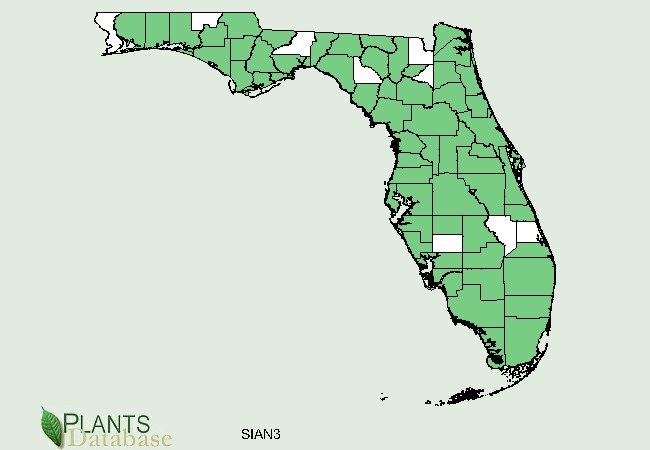

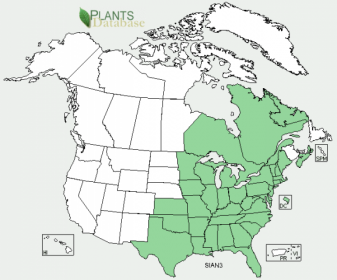
Links for Narrowleaf Blue-Eyed Grass

